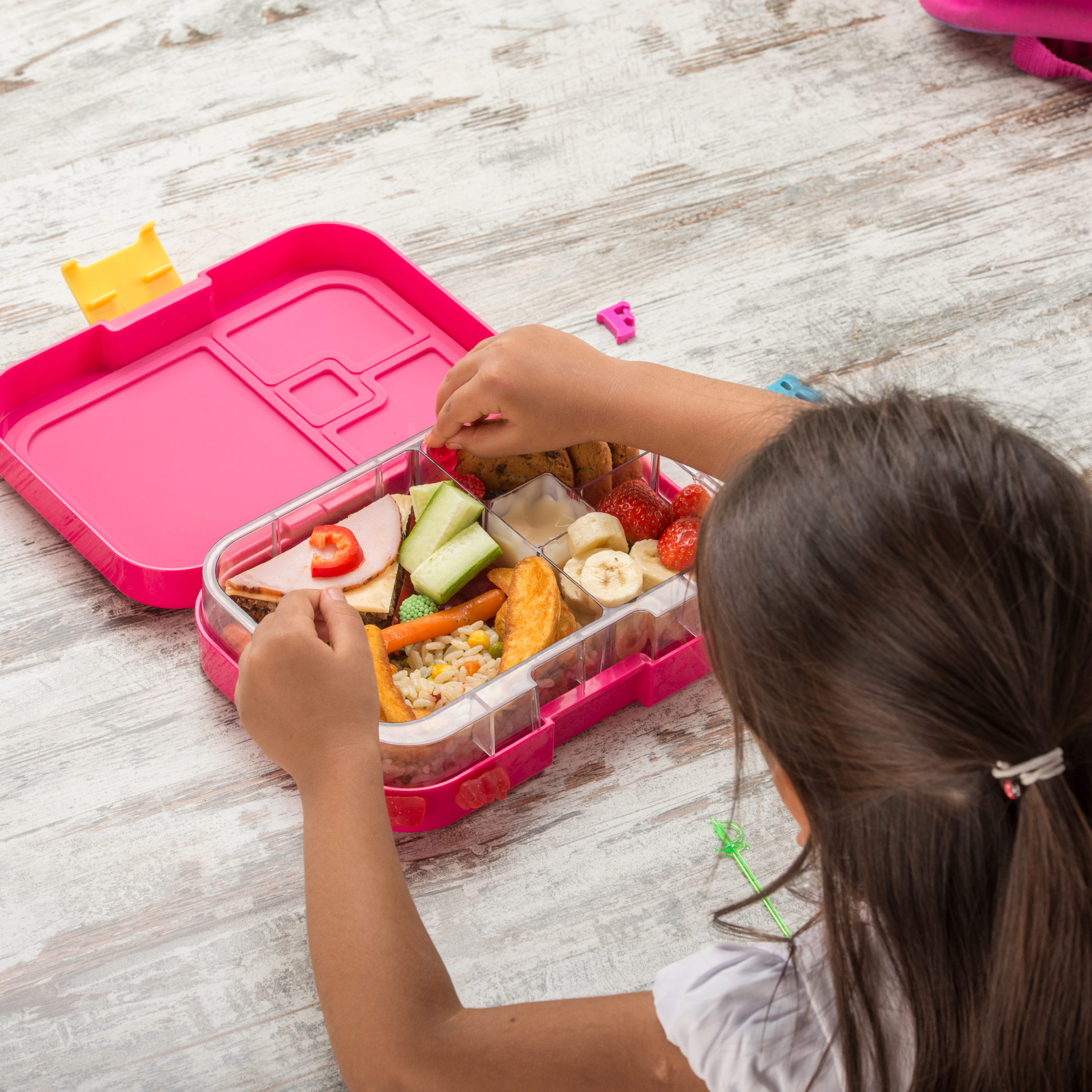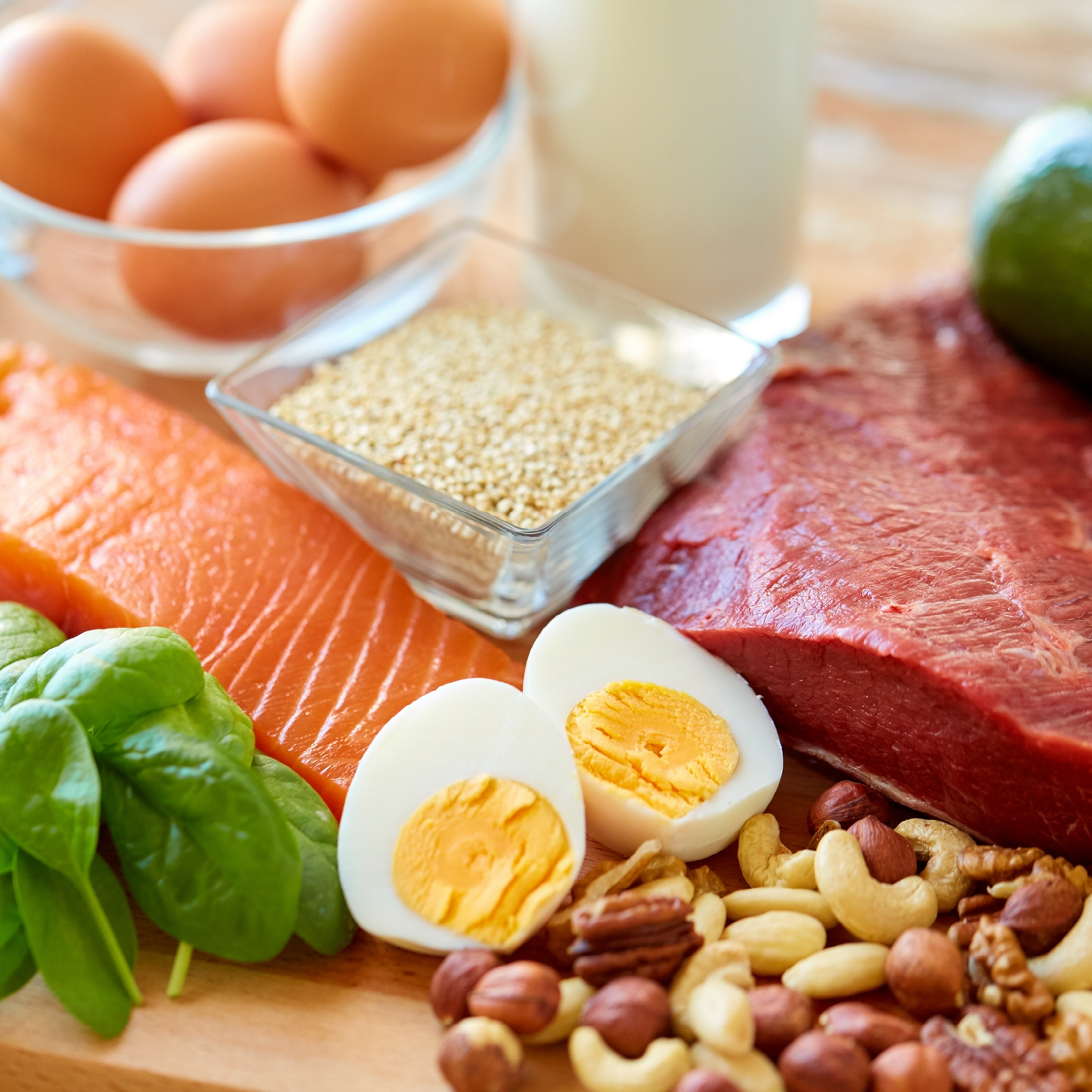HEALTHY LUNCHBOX TREAT SWOPS FOR PEOPLE WITH DIABETES

Packing lunch is a great way to ensure that you and your loved ones get a nutritious meal to keep going throughout the day.1 This practice is not only cost effective considering rising food prices, it also ensures that you control what foods your children are eating as well as portion sizes1. Foods commonly bought at the tuck-shop are often higher in calories, sugar, unhealthy fats and salt. Avoiding or limiting these types of foods is not only important for those living with Diabetes, it is a general guideline that everyone - big or small - should follow.
So, what about treats? This is often something that kids living with Diabetes miss the most. Remember, your child can still enjoy most of the foods he or she loves, it just requires some education. This should focus on the importance of portion control, how these foods affect blood sugar and how to manage this effectively as well as healthy treat swops. It should also centre on behavioural tips, such as eating a healthy, savoury snack before a treat and exercising. Every child is different but adding the odd treat to your child’s lunch box is a great way to avoid feelings of “missing out”. But remember, this shouldn’t be an everyday thing and should only be included once in a while.
Finding the balance between providing treats and ensuring children are getting nutritionally dense foods, can be difficult. Here are some treat swops that you can include in your child’s lunch box.
POTATO CHIPS
Crunchy, salty potato chips are often a firm favourite but they contain many calories, refined carbohydrates, unhealthy fats and salt. Here are a few healthier alternatives:
- Popcorn
Popcorn is a great snack as it is high in dietary fibre, rich in complex carbohydrates and low in fat2. Choose air-popped popcorn instead of those microwave or store-bought options though, as it is lower in fat and salt. Two to three cups of air-popped popcorn contains 15g of carbohydrates or 1 carbohydrate exchange, while 36g of Lays (a single serving packet) contains 17.5g of carbohydrates.3 This is also a much smaller portion and it is unhealthier than popcorn.
- Vegetable crisps
With this whole health food craze, there are many different vegetable crisps on the market. The most common vegetables crisps are made from butternut, pumpkin, beetroot, kale and sweet potato. A typical store-bought portion (25g) of these vegetable chips is equal to 14 g of carbohydrates or 1 carbohydrate exchange. This is also a great way to get your kids to eat more vegetables. You can even make your own homemade version, like these kale chips (see references for the recipe) 4.
- Crunchy roasted chickpeas
As an alternative to chips, try making these homemade chickpea snacks. (See references for the recipe)5. Chickpeas are high in protein and fibre, low in fat and contain many vitamins and minerals such as vitamin K, vitamin B6, iron, magnesium, folate, phosphorus, zinc, copper, manganese, choline, and selenium6.
CHOCOLATES
Although chocolate is delicious, it is often one of those treats you can’t only eat a few blocks of. Try these swops instead:
- Snack bars or nut & seed bars
Nut and seed bars are great treat swops, as they are packed with healthy fats, fibre and protein. They are also easy to make and you can add whatever ingredients you want. Cut these into small squares and add one to your child’s lunch box. (See reference 7 for the recipe)7. Store-bought snack bars are better options than chocolate, but bear in mind that they can also be high in sugar, calories and fat. It is therefore important to read labels and see how many teaspoons of sugar and fat the bar contains. Take the total per serving and divide it by 5 to work out how many teaspoons of fat it contains, or divide it by 4 to work out how many teaspoons of sugar it contains.
Try the FUTURELIFE® High Protein LITE Bar. It’s low GI, high in quality protein and contains MODUCARE®. It is a great snack option as it only contains 8g of carbohydrates which is equal to ½ a carbohydrate exchange. Another option is our FUTURELIFE® Crunch Protein Bar. It contains slightly more protein than 1 egg (8.3g) and 15g of carbohydrates, which is just less than 1 carbohydrate exchange. It comes in 40g and 12g bar options. The 12g option is great for lunch boxes.
- Fruit bars
Fruit bars are made from delicious, dried fruits which are high in fibre, vitamins and minerals. It is also important to look at the carbohydrate content of these bars as fruit contains fructose, which is a sugar found naturally in fruit and honey. If eaten in large portions, dried fruit bars can push up your blood sugar levels. Rather choose the smaller bars or ‘lite’ or ‘slimmer’s choice’ options.
SWEETS
Trail mix, nuts & dried fruit
These are all great options as they contain healthy fats, fibre, vitamins and minerals. Remember you don’t need large portions here. A small handful of nuts is sufficient. For dried fruits, 4 apricots or apple slices is the same as 2 fresh apricots or 1 apple. Make a trail mix by adding 1 tablespoon of raisins or cut up dried fruit to ¼ cup of raw unsalted nuts. Remember to stick to a small handful at a time. Another sweet option is a rainbow fruit skewers. Cut up different types of seasonal fruits and add them to the skewer. Don’t forget to cut off the pointed end.
SUGAR-SWEETENED BEVERAGES
These are one of the main sources of sugar and calories in our children’s diets. Evidence shows that drinking one sugar-rich beverage (e.g. fizzy cold drinks, fruit juice, ice tea etc.) per day, increases the likelihood of being overweight by 27% in adults and 55 % in children8. Just 330ml of a sugar-rich beverage per day, increases your risk of developing type 2 Diabetes by 15%9. Therefore, it is of great importance that these drinks are avoided completely or limited. Water - whether it’s tap, still or sparkling - is still the number one choice. Try adding fruit, vegetables, herbs or a small amount of sugar-free cordial to flavour the water, if your children don’t like the taste of plain water. Homemade sugar-free ice teas or herbal teas are a great way to get in the recommended amount of fluids. Artificially sweetened beverages are better than their sugary counterparts but avoid or limit where possible.
CAKES OR CONFECTIONARY
Cakes, pastries, doughnuts, rusks and biscuits are often a firm favourite with kids and adults alike. These foods are high in calories, sugar, unrefined carbohydrates and unhealthy trans fats. They should be limited to special occasions and when included, their portion sizes controlled. Whole grain, high-fibre options - such as whole grain rusks, bran muffins or baked goods made with bran, whole wheat flour, nuts and seeds - are better options but care should be taken, as they are often still high in calories and sugar. Include a few whole grain or seed crackers with a topping such as sugar-free nut butter, cottage cheese and blueberries or peanut butter and banana.
Remember that healthy snacking is reliant on leading by example, planning ahead and shopping for healthy foods. Get your children involved and let them help you make their lunch, as they are more likely to eat it that way. A healthy lunch box can go a long way in helping to meet your child’s blood sugar goals. Next time you pass the chip, sweets, chocolates and biscuits aisle at your local grocery store, just keep walking.
Visit our website for more information on our products, recipes and articles. For ideas on how to pack a diabetic friendly lunch box visit our website to read the articles: www.futurelife.com
REFERENCES:
- FUTURELIFE. Healthy School lunch boxes for people living with Type 2 Diabetes. Available at: http://futurelife.co.za/healthy-school-lunches-for-people-with-type-1-diabetes/ (Accessed 30th June 2017)
- King of Pop. (2013) A Kernel for your thoughts. Available at: https://www.kingofpop.com/Blog/post/the-health-benefits-of-popcorn.aspx (Accessed 28th June 2017)
- University of Cape Town. (2012). Exchange list manual. (Accessed 28th June 2017)
-
Oh she grows. (2017) 6 Tips for Flawless Kale Chips + All-Dressed Kale Chips recipe. Available at: http://ohsheglows.com/2014/03/12/6-tips-for-flawless-kale-chips-all-dressed-kale-chips-recipe/
(Accessed 29th June 2017) - All recipes.com. Roasted Chickpeas. Available at: http://allrecipes.com/recipe/81548/roasted-chickpeas/ (Accessed 28th June 2017)
- Medical News Today. Chickpeas: Health benefits and nutritional information. Available at: http://www.medicalnewstoday.com/articles/280244.php (Accessed 28th June 2017)
- Oh she grows. (2017) feel good hearty granola bars. Available at: http://ohsheglows.com/2014/05/20/feel-good-hearty-granola-bars/ (Accessed 30th June 2017)
- University of Witwaterstrand Johannesburg. (2006) Facts about sugar-sweetened beverages (SSBs) and obesity in South Africa. Available at: https://www.wits.ac.za/news/latest-news/research-news/2016/2016-04/ssb-tax-home/sugar-facts/ (Accessed 30th June 2017)
- EJE. (2016) Sweetened beverage intake and risk of latent autoimmune diabetes in adults (LADA) and type 2 diabetes. Available at: http://www.eje-online.org/content/175/6/605.full.pdf (Accessed 30th June 2017)









